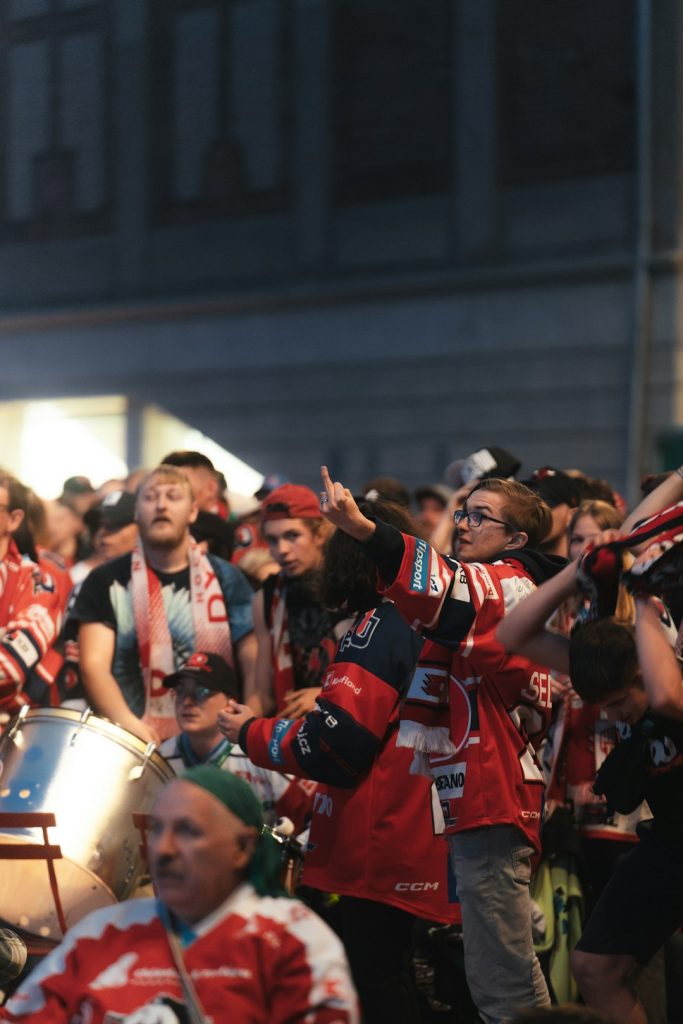Over the past several years, it’s become increasingly clear that the NHL is making aggressive moves to grow its footprint, both in North America and globally. New teams like the Vegas Golden Knights and the Seattle Kraken have injected fresh energy into the league, raising the question: Why is the NHL expanding so much? The answer involves a fascinating mix of business strategy, shifting fan demographics, technological advances, and a desire to stay competitive with other major sports leagues.
TL;DR (Too Long; Didn’t Read)
The NHL is expanding to tap into new markets, increase revenue, and grow its fan base globally. With recent successes like the Vegas Golden Knights, expansion has proven to boost excitement and profitability. The league also aims to stay competitive with other sports organizations that have already embraced broader audiences. Strategic planning around media rights, globalization, and community engagement are key to its expansion goals.
The Modern Expansion Era: Not Just About Numbers
For a long time, the “Original Six” teams dominated NHL history—a tightly-knit group of franchises that anchored the league for decades. But the modern NHL looks very different. With 32 teams as of 2024, and chatter about more to come, it’s evident that expansion is no longer just about rounding out divisions—it’s a core part of the NHL’s business model.
The NHL’s recent expansion activity includes:
- Vegas Golden Knights (2017): The first major professional sports franchise in Las Vegas. They reached the Stanley Cup Final in their inaugural season and won the Cup in 2023.
- Seattle Kraken (2021): Brought NHL hockey to the Pacific Northwest, tapping into a previously underutilized market.
These teams have experienced surprising success both on and off the ice, giving the NHL a powerful case study in how carefully planned expansion can benefit the league and its stakeholders.
Why Expand?
So what’s driving this aggressive growth? Here are the main reasons:
1. Tapping Untapped Markets
Many expansion cities, like Las Vegas and Seattle, provide large, engaged fan bases that were previously underserved by the NHL. These regions often have the infrastructure and sports-hungry populations ready to invest emotionally and financially in a new team.
Market analysis showed a sizable demand for hockey in these cities, and early ticket sales proved the idea correct. For example, Seattle sold over 30,000 season ticket deposits in less than two days after the Kraken were announced—a clear sign of pent-up demand.

2. Revenue Generation
Expansion brings an enormous influx of capital. New teams pay large expansion fees—the Seattle Kraken paid approximately $650 million to enter the league, none of which goes to the players. Instead, it’s distributed among the existing team owners, making expansion a lucrative takeaway for current stakeholders.
Moreover, new markets mean new broadcast packages, apparel sales, and advertising opportunities. A growing league also strengthens the league’s bargaining power in media and streaming negotiations.
3. Globalization and Brand Building
The NHL may be a North American league, but hockey’s fan base is growing globally. Events like the NHL Global Series, which stages games in Europe and other international markets, reflect the league’s intent to expand its global reach. Establishing a team in an untapped region, even domestically, helps cultivate fans abroad by increasing visibility and coverage.
In this light, expansion is about more than geography—it’s about global brand scaling.
The Expansion Blueprint: What Makes a City NHL-Ready?
Not every city can support an NHL team. Several factors help determine a location’s viability:
- Arena Quality: Adequate and modern facilities are a must.
- Ownership Group: The NHL wants financially stable and local or invested owners.
- Market Demand: Indicators like ticket pre-sales, minor league hockey success, or overall sports culture play a role.
- Media Market Size: Larger markets mean more revenue from local broadcasting deals.
It’s a high bar to clear, but when done right, the rewards—for the league, the city, and fans—are massive.
Risks and Challenges of Expansion
No large-scale growth effort is without its downsides. Expansion introduces complex questions, such as:
- Will the talent pool become too diluted?
- Can weaker or newer franchises be sustainable?
- How will scheduling and travel logistics be managed?
While recent expansion teams have performed well, not every franchise has been as successful historically. Teams in Phoenix and Florida, for example, have battled low attendance and financial instability over the years.

To mitigate these risks, the NHL focuses on careful vetting and long-term planning. The league now offers better revenue-sharing models and forums for ownership collaboration, increasing the odds of new team sustainability.
Data-Driven Decisions
Another reason for the success of recent expansions is the NHL’s use of advanced analytics and market research. Before placing a team, the league conducts feasibility studies, economic impact reports, and fan engagement surveys.
Through data, the NHL can target not just growing cities, but cities with rising youth hockey participation, diverse populations open to new sports, and tech-savvy audiences who will stream, share, and engage across platforms.
Other Sports Leagues Are Doing It Too
The NHL isn’t alone. Major League Soccer (MLS), the NFL, and the NBA have all explored or executed expansion plans in recent years. These leagues recognize the importance of staying current in new markets and younger demographics.
More teams mean:
- Greater visibility
- Better national TV distribution
- Stronger merchandising potential
By following suit, the NHL maintains parity with other leagues and ensures its relevance to future generations of fans.
What’s Next? Potential Future Expansion Cities
The rumor mill is always buzzing with talk of the next NHL destination. Although nothing is confirmed as of yet, some cities are frequently discussed as possible candidates:
- Quebec City: Passionate fan base and a state-of-the-art arena, but issues concerning market size and proximity to Montreal linger.
- Houston: A large media market with a ready arena and potential ownership interest—likely a front-runner.
- Kansas City: Sprint Center was built with NHL intentions, but fan support and ownership remain in question.
- Salt Lake City: A growing metro area with strong youth hockey participation and interest.
Conclusion: Expansion Is Here to Stay
In a rapidly changing entertainment landscape, the NHL understands that remaining stagnant is not an option. Strategic expansion offers a way to bring in new fans, new revenue, and new excitement to a sport deeply rooted in tradition.
So, why is the NHL expanding so much? Because it’s smart business, it’s energizing the fan base, and it positions the league for a more global, connected, and profitable future. With the success stories of Vegas and Seattle, expect the NHL to keep skating forward—as more than just a game, but as a growing global brand.
